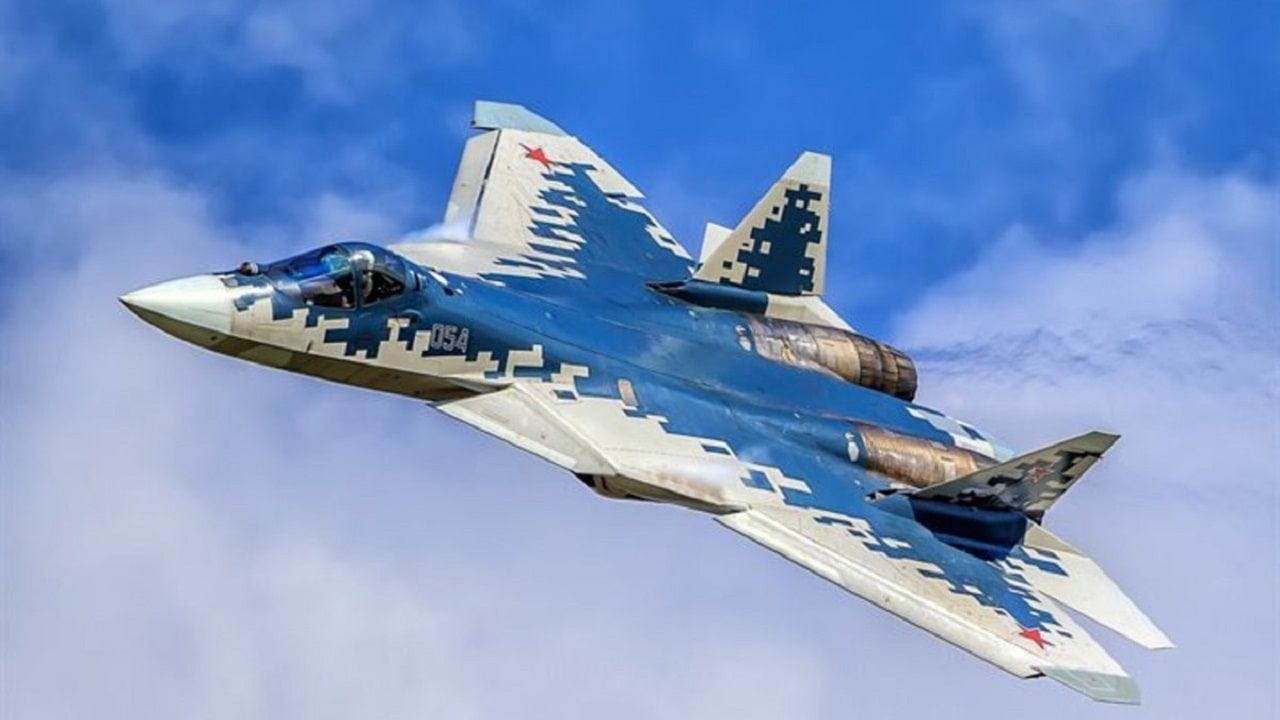Russia’s beleaguered Sukhoi Su-57 program had a breakthrough in August: four new jets were produced, injecting some optimism for the future of the fifth-generation fighter program (see our new original video on this topic below).
The Su-57 (NATO callsign: “Felon”) is a twin-engine, multirole stealth fighter. Russia has never produced a fifth generation, or stealth, aircraft before. The jet is the result of a program called the “prospective aeronautical complex of front-line air forces” that began in 1999. The Su-57 is meant to perform a broad spectrum of mission profiles – everything from air superiority to ground and maritime strikes; the jet is versatile. Like preceding fifth-generation fighters, the Su-57 features stealth, supercruise, supermaneuverability, integrated avionics, and an internal payload.
Developing a cutting-edge fighter jet, loaded with novel technologies, can be time and resource intensive. The Su-57 program is no exception, taking decades and vast resources so far with minimal gains. In testing new systems meant for the Su-57, the designers relied on existing airframes. For example, to test the internal weapons bay, designers outfitted the existing Su-47 with an internal weapons bay; to test the engine and flight controls, the existing Su-27M was outfitted with the Su-57’s engine and flight controls. By 2004, the Russian design team had agreed upon a design for the plane. The Ministry of Defense approved the design and the prototype aircraft entered development for flight testing.
The Su-57 program has struggled to stay on schedule. The jet was supposed to make its maiden flight in 2007. But problems – which the Russians attempted to cover up – delayed the first flight. For years. Finally, in 2009, the Russians admitted that the Su-57 was experiencing engine problems.
In early 2010, the Su-57 finally made its initial flight, when Sergey Bogdan flew for 47 minutes. Still, the program progressed slowly. The Russians built ten aircraft but six were deemed inadequate because of the aircraft’s susceptibility to fatigue; during early testing, the Su-57’s airframe had a tendency to crack. The structural problems were remedied and a redesigned Su-57, with increased (stronger) composite materials, an elongated tail “sting,” and a slightly larger wingspan was unveiled.
The redesigns did not solve all of the Su-57’s problems; the program has continued to struggle. At first, the Ministry of Defense planned to order 60 production Su-57s. Incrementally, the 60-plane target was lowered. Today, only a handful of Su-57s have entered service. Yet, finally, a glimmer of hope. As Tass reported on August 16th, the Su-57 program seems to be headed in the right direction.
“Four serial-produced Su-57 fifth-generation multirole fighter jets have been built today under a state contract with Russia’s Defense Ministry,” United Aircraft Corporation CEO Yuru Slyusar told Tass. “Under a state contract with the Russian Defense Ministry for the serial production of Su-57s, four aircraft have been built as of today. This year, there are plans to deliver the next batch of planes. The United Aircraft Corporation fulfills work with subcontractors in accordance with the state contract signed.”
Russia plans to forge ahead with their delayed fifth-gen fighter. “Russia’s Aerospace Force will receive 22 Su-57 fighters by late 2024 and their numbers will increase to 76 by 2028,” Tass reported. “The first Su-57 fighter was delivered to the Russian troops in 2020.”
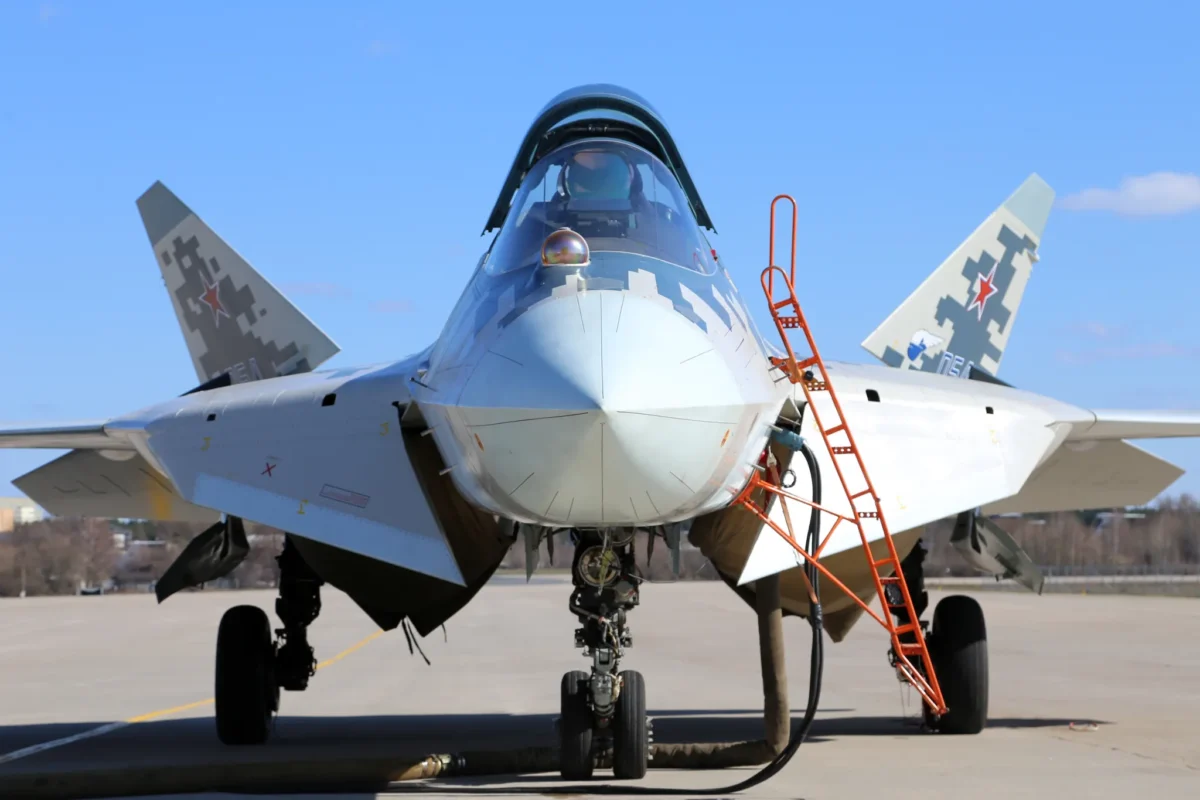
Russia’s Su-57 Stealth Fighter. Image Credit: Creative Commons.
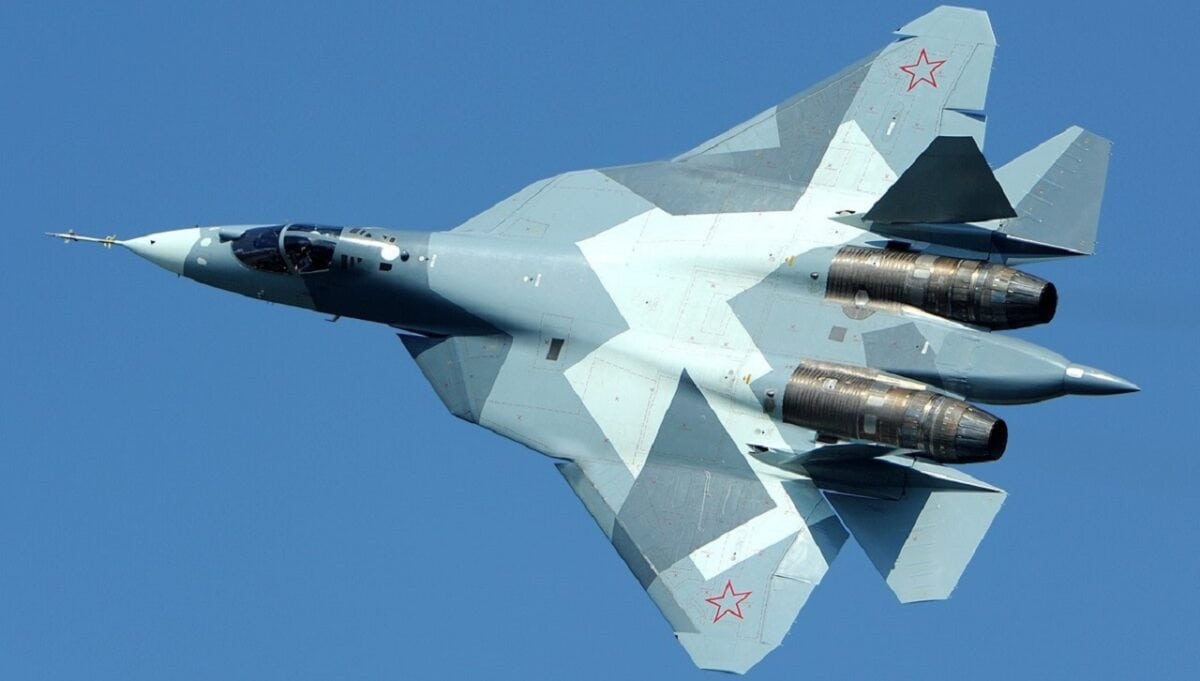
Su-57. Image Credit: Creative Commons.
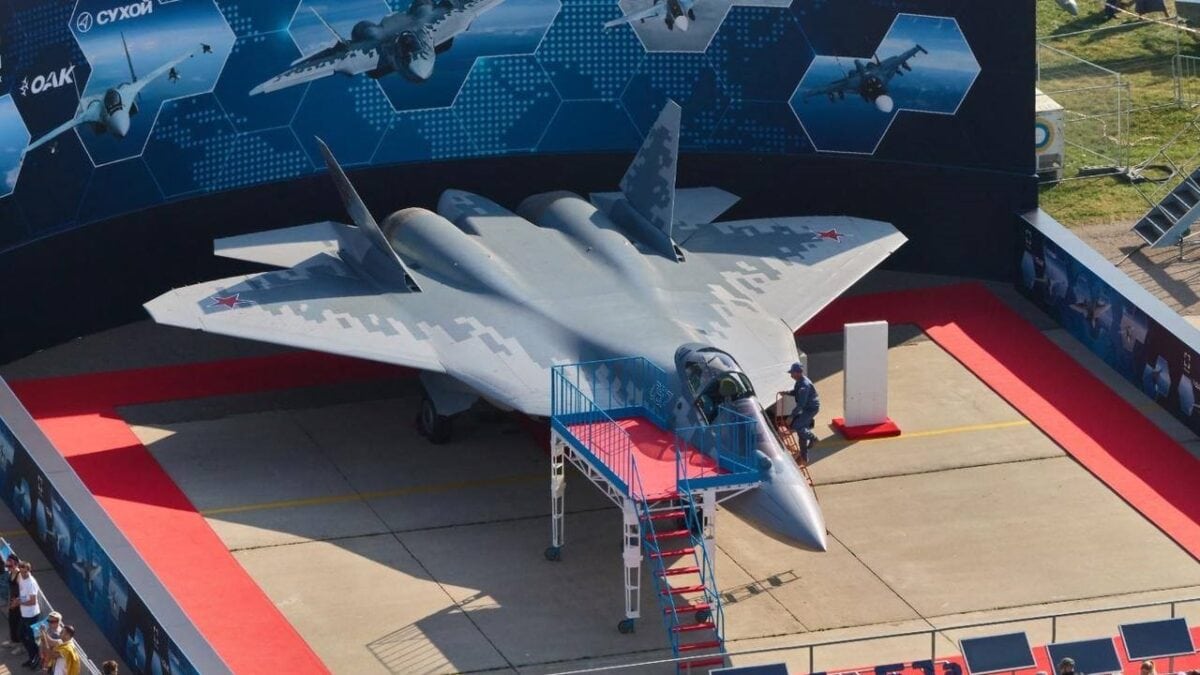
Su-57. Image Credit: Creative Commons.
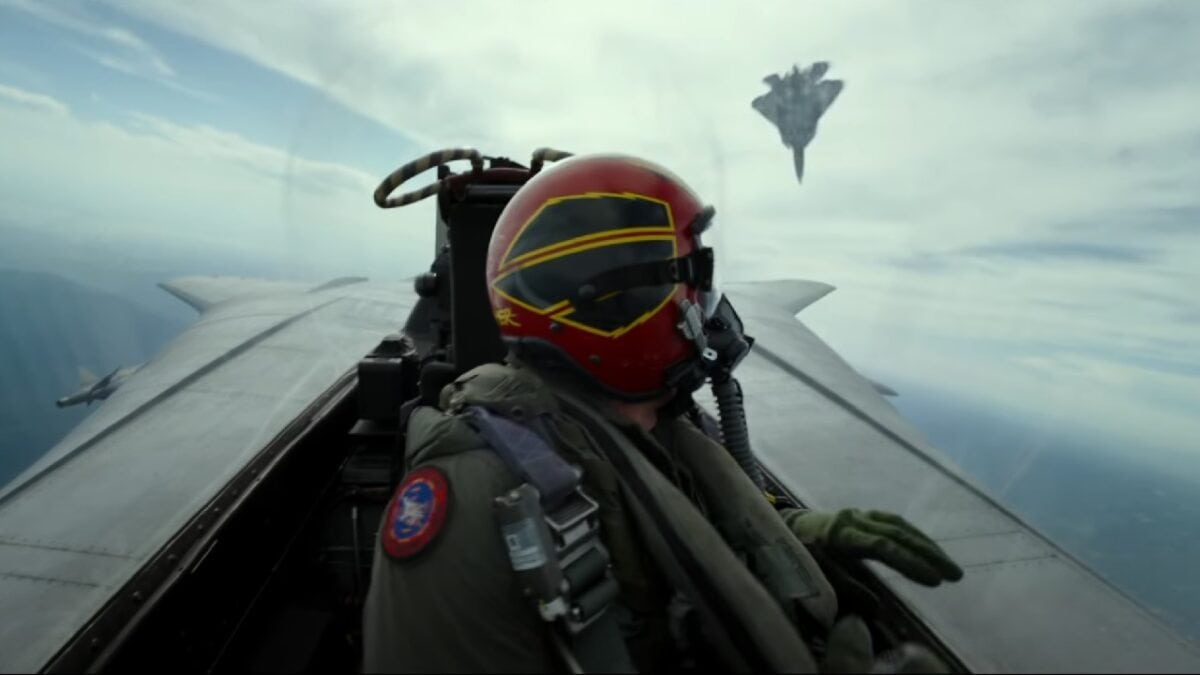
Su-57 in Top Gun: Maverick. Image Credit: YouTube Screenshot.
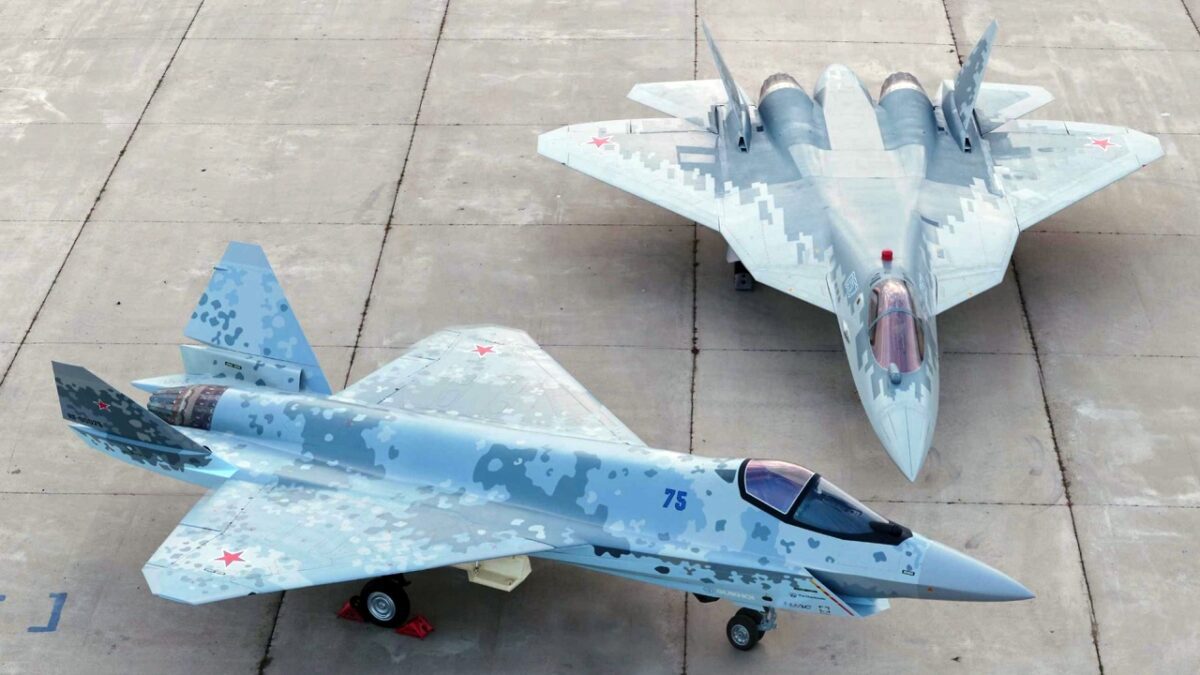
Su-75 Checkmate and Su-57 stealth fighter. Image Credit: Creative Commons.
Despite the program’s problems, the Su-57 is perhaps best known – suddenly – for its role in the year’s top-grossing film: Top Gun: Maverick. The film features US Navy pilots going up against an unnamed enemy in a secret mission to destroy a nuclear weapons facility. The film marks Top Gun’s return to the screen after a 36-year hiatus. The Su-57, although not referred to by name, was clearly the enemy combatants “fifth-generation fighter.” In the film’s climactic scene, two Su-57s, rendered with CGI, are bested by a Tom Cruise-piloted F-14 Tomcat. The scene was unrealistic – and most likely vexing to Russia who is sensitive about their portrayal in Western media generally – and especially sensitive with respect to their way-behind-schedule Su-57 fighter.
Harrison Kass is the Senior Defense Editor at 19FortyFive. An attorney, pilot, guitarist, and minor pro hockey player, he joined the US Air Force as a Pilot Trainee but was medically discharged. Harrison holds a BA from Lake Forest College, a JD from the University of Oregon, and an MA from New York University. He lives in Oregon and listens to Dokken. Follow him on Twitter @harrison_kass.

